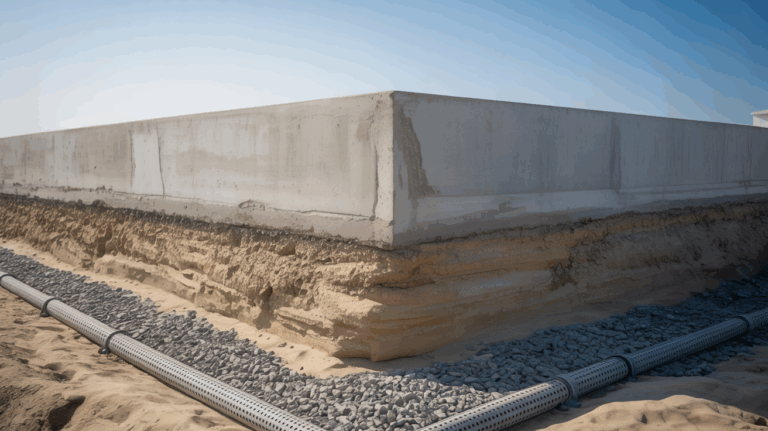Table Of Contents
What You Need To Know About Archaeological Discoveries | Essential Information About Archaeological Discoveries and Major Discoveries You Need to Know
Key Takeaways
- Comprehending archaeological finds and their implications
- The importance of historical items and their impact on culture
- Remarkable archaeological finds that shaped human history
- Recommended methods for effective archaeological investigations
- Upcoming developments and innovations in the field of archaeology
Understanding Archaeological Discoveries
Archaeological discoveries play a crucial role in unlocking the past, providing insights into human history and cultural evolution. What You Need to Know About Archaeological Discoveries includes understanding the different types of archaeological sites, the significance of artifacts uncovered through archaeological digs, and the methodologies involved in archaeological surveys and fieldwork. Archaeologists, through their meticulous research, analyze archaeological remains to reconstruct life in various periods, such as prehistoric archaeology and classical archaeology. By studying these findings, one gains valuable perspectives on ancient societies and their interactions. Engaging with archaeological artifacts not only enriches our knowledge of historical archaeology but also highlights the importance of preserving these sites for future generations.
Definition and Importance of Archaeological Discoveries
Archaeological discoveries are essential for understanding human history and the development of societies. They encompass a wide range of artefacts and ancient monuments that reveal insights into prehistoric cultures. The society of American archaeology plays a pivotal role in advancing research and public awareness about these findings. These discoveries are often showcased in institutions like the Museum of Natural History and the National Museum of Natural History, where excavated items and fossils provide tangible links to our past. Knowing what you need to know about archaeological discoveries allows us to appreciate how these findings shape our comprehension of human evolution and cultural diversity.
Excavations conducted by archaeologists unearth significant artefacts that serve as primary evidence for historical narratives. Each discovery contributes to a larger picture, informing our knowledge about ancient civilizations and their practices. The preservation of these items within museums, such as Museum Island, ensures that the story of humanity continues to be told. Understanding the importance of these archaeological finds is crucial for recognizing our heritage and identity. What you need to know about archaeological discoveries involves appreciating how each excavation can alter our perspective on human history and inform future generations.
The Role of Technology in Uncovering the Past
Technology has revolutionized the field of archaeology, expanding our ability to explore ancient sites and analyze artifacts. Techniques like ground-penetrating radar allow researchers to investigate burial sites without disturbing the ground. This non-invasive approach is crucial for preserving ancient Egyptian sites, where intricate terracotta sculptures and hieroglyphs await discovery. With the help of 3D imaging, museums can now digitally replicate antiques, providing valuable insights into the craftsmanship of ancient civilizations and facilitating public engagement.
The study of fossils and geological formations also benefits from technological advancements. Tools such as laser scanning and GIS mapping enable archaeologists to meticulously document caves and other significant locations over time. These technologies aid in understanding the relationship between humans and their environment throughout geologic times. As we learn more about past civilizations, including the intricate lifestyles of the ancient Egyptians, these innovations underscore the importance of technology in preserving history for future generations while enhancing what you need to know about archaeological discoveries.
The Significance of Archaeological Artifacts
Archaeological artifacts serve as crucial links to the past, offering insights into ancient cultures and human behavior. What You Need to Know About Archaeological Discoveries includes understanding how artifacts like pottery and sculptures reveal the daily lives, rituals, and artistic expressions of civilizations such as the ancient Romans. Historians utilize these findings alongside archival research to construct narratives that highlight the significance of these remnants, including their role in UNESCO World Heritage Sites. An archaeological studies program typically emphasizes the importance of these artifacts, fostering archaeological awareness and encouraging the meticulous documentation of discoveries. Engaging in an archaeological project not only enriches our knowledge but also contributes to the creation of comprehensive archaeological research reports that celebrate our shared heritage.
Types of Archaeological Artifacts
Archaeological artifacts are diverse and can range from tools and pottery to human remains and structures. Understanding the different types is crucial for grasping their archaeological significance. Each category reveals insights into the culture and daily lives of past civilizations. Archaeologists want to classify these artifacts to facilitate better analysis and interpretation. Important archaeology collections often showcase these items, enabling a deeper appreciation of historical contexts. Projects under archaeological services frequently involve cataloging and studying artifacts unearthed during fieldwork at various archaeological sites.
Artifacts serve as tangible connections to history, offering a wealth of information about the societies that produced them. Historical archaeology sites, for instance, often reveal artifacts that reflect the daily practices, spiritual beliefs, and technological advancements of their inhabitants. The field of archaeology dig includes the painstaking search for these remnants, highlighting the importance of archaeological organizations and groups dedicated to preserving and studying these findings. What you need to know about archaeological discoveries is that every artifact contributes to a larger narrative, enriching our understanding of human history.
How Archaeological Artifacts Inform Us About Cultures
Archaeological artifacts serve as crucial links to the past, offering insights into the lives of ancient cultures. What You Need to Know About Archaeological Discoveries reveals that these items are not just remnants but narratives of their creators. Through various archaeology projects, discoveries such as prehistoric artifacts illustrate daily life, religious beliefs, and trade practices of past societies. As archaeologists today analyze these findings, they utilize comprehensive archaeology programs and specialized archaeology courses to deepen their understanding.
Each artifact tells a unique story, providing context that helps to decipher the behavior and values of previous civilizations. Site archaeologists meticulously document their findings, ensuring that the information can be shared and understood. Fun archaeology facts show that the work of an archaeologist involves piecing together fragments of history, where practices from the time of the first archaeologist still resonate. As they teach archaeology and engage with their own archaeology programs, they shape the future understanding of humanity and the diverse cultures that have contributed to our shared heritage.
Notable Archaeological Discoveries Throughout History
Throughout history, many significant archaeological discoveries have reshaped our understanding of human civilization and cultural development. What You Need to Know About Archaeological Discoveries includes the roles of both professional and amateur archaeologists in uncovering the past. Few archaeologists focus solely on prehistoric artifacts; instead, many times archaeologists employ non-invasive techniques to preserve sites while collecting data. State archaeologists and Ph.D. archaeologists often collaborate on major findings, which can lead to further excavations. It is common for an amateur archaeologist to work alongside experts, as the collective effort of various individuals can yield groundbreaking results. The decisions made by archaeologists influence how the findings are recorded and interpreted, offering invaluable insights into our ancestral heritage.
Major Discoveries That Changed Our Understanding of Humanity
Archaeological discoveries have significantly altered our comprehension of humanity’s past. Major findings, such as prehistoric paintings in caves and well-preserved prehistoric burials, have provided deeper insights into prehistoric cultures. These discoveries are often facilitated by state archaeology offices, which collaborate with official archaeologists and local state archaeologists. By conducting scale excavations and employing advanced techniques, these experts contribute to our understanding of historic artifacts. What You Need to Know About Archaeological Discoveries highlights the importance of centralized archaeology storage for preserving interesting artifacts that tell our story.
One of the notable figures in this field is American archaeologist David, whose research has shed light on various prehistoric cultures. His work exemplifies how the examination of significant discoveries can reshape historical narratives and offer alternative perspectives on our ancestors. Insights gained from excavations not only enrich our knowledge of ancient societies but also inspire further inquiry into the complexities of human evolution and interaction. Understanding what these discoveries reveal about prehistoric culture is essential for appreciating our shared heritage and the ongoing quest to uncover our past.
Recent Discoveries Making Headlines
Recent archaeological efforts have led to unnerving discoveries that captivate the global audience. For example, excavated portions of an ancient settlement revealed a trove of small artifacts that predate known civilizations. These recent artifacts provide valuable insights into the lives of prehistoric humans, offering a glimpse into their daily activities and social structures. Museums are eager to showcase these historic artifacts, as they open new avenues for understanding our shared past. In light of these findings, it is essential to recognize What You Need to Know About Archaeological Discoveries and their impact on our comprehension of human history.
New techniques in artifact analysis are transforming how researchers approach individual artifacts. The discovery of prehistoric tools and decorative items has prompted scholars to reevaluate timelines and cultural narratives, leading to fresh interpretations of artefacts date. Selling artifacts is an ongoing concern, prompting discussions about the ethics of preservation versus commercialization. These discoveries not only enrich museum exhibits but also challenge existing paradigms about the evolution of human societies. As the field progresses, it remains vital to stay informed about What You Need to Know About Archaeological Discoveries to fully appreciate their significance.
- Recent archaeological finds provide insights into prehistoric human life.
- New analytical techniques are changing traditional interpretations of artifacts.
- The timeline of human civilization is being reevaluated based on recent discoveries.
- Ethical concerns regarding artifact preservation versus commercialization are intensifying.
- Museums are increasingly focused on showcasing these new discoveries.
- Discussions around the implications of these findings on our understanding of social structures are emerging.
- Public interest in archaeology is on the rise, highlighting the importance of education in the field.
Best Practices for Conducting Archaeological Research
Conducting archaeological research involves a meticulous approach to uncovering the past, which is vital for understanding what you need to know about archaeological discoveries. Utilizing historical research techniques enables researchers to date artifacts accurately and contextualize surface artifacts within their archaeological layers. Institutions like the British Museum and the Pennsylvania Museum play crucial roles in providing resources and support for documenting findings, including valuable antiques and historical documents. Discoveries such as Roman treasure shed light on ancient ancestors and their historic culture, revealing connections that deepen our appreciation of human history. Emphasizing geological perspectives can also enhance this process, allowing for a more comprehensive understanding of the landscapes in which these artifacts are found.
Methods for Excavation and Documentation
Excavation techniques are crucial in uncovering the layers of history buried beneath the surface. Archaeologists typically divide a site into excavation units, often using grid patterns to systematically uncover artifacts and other remains. This method allows researchers to maintain accurate records of where each object is found, which is vital for understanding the context of the discovery. For instance, in a site that features an ancient Roman city, the location of each artifact moves can provide clues about the lives and interactions of historic cultures. What You Need to Know About Archaeological Discoveries encompasses not only the physical artifacts but also the relationships these objects reveal about the past, allowing us to piece together complex histories.
Documentation is equally important in the excavation process. Each artifact discovered during a dig is meticulously recorded, including its origin, condition, and any relevant associations with other finds. These detailed records become invaluable resources for local museums and scientific sites, enhancing our understanding of human civilization. Unusual discoveries, such as significant Egyptian finds, often garner excitement within the archaeological community and can even lead to the designation of certain sites as UNESCO World Heritage locations. Anthropology meets history in these efforts, as researchers strive to preserve and interpret the evidence of previous cultures, ensuring that the knowledge of our shared heritage continues to inform future generations.
Ethical Considerations in Archaeology
Ethical practices in archaeology revolve around respecting cultural heritage and ensuring that excavation projects are conducted responsibly. Understanding What You Need to Know About Archaeological Discoveries involves recognizing the significance of deposits and their relation to historic preservation acts. Researchers must carefully document every find, particularly items such as fossilized remains and artifacts like stone tools. This attention to detail is crucial for forming a comprehensive narrative about ancient peoples, including their use of egyptian hieroglyphs thanks to their literacy and artistry.
The implications of excavating burial sites and historic locations necessitate a strong ethical framework. Ethical considerations require archaeologists to prioritize the preservation of artefacts for future generations while minimizing disruption at dig sites. Common digging tools should be employed judiciously to avoid damage to delicate layers of history. Exhibits displaying findings must present a respectful portrayal of cultures and their practices. These foundational principles guide the field in ensuring that archaeological endeavors contribute positively to our understanding of natural history and human development.
| Ethical Principle | Description | Implementation Strategies |
|---|---|---|
| Respect for Cultural Heritage | Recognizing the importance of artifacts and sites to cultural identity. | Involve local communities in decision-making and include cultural leaders in planning excavations. |
| Documentation | Thorough recording of all finds to ensure historical context is preserved. | Use standardized methodologies and technologies for data collection and storage. |
| Minimize Disruption | Avoid unnecessary excavation of sensitive sites to protect historical integrity. | Conduct non-invasive surveys and utilize digital mapping techniques prior to excavation. |
| Respect in Exhibitions | Ensure that displayed findings honor the cultures they represent. | Engage cultural representatives in the curation process and provide context for exhibits. |
Future Trends in Archaeology
Emerging trends in archaeology highlight the increasing challenges posed by climate change and its impact on both archaeological sites and historical records. What You Need to Know About Archaeological Discoveries encompasses the need for strategies that preserve sites, such as those housing ancient ceramic pots or significant burials. As paleontology studies continue to evolve, they often intersect with archaeological findings, expanding our understanding of human history and its relationship with the environment. For instance, the discovery of Spanish caves containing ancient inscriptions, including Egyptian hieroglyphs, or giant boulders exhibiting historic structures and artifacts, emphasizes the importance of preservation efforts. The future lies in a more integrated approach, utilizing advanced technology to protect these invaluable finds while maintaining a commitment to ethical research practices.
- The adoption of remote sensing technology for site analysis and monitoring.
- Collaboration between archaeologists and climate scientists to assess site vulnerability.
- Increased use of 3D modeling and virtual reality to recreate and study archaeological sites.
- Emphasis on community involvement in archaeological projects to ensure local perspectives are considered.
- Development of sustainable excavation practices to minimize environmental impact.
- Focus on interdisciplinary research to connect archaeology with other fields such as ecology and anthropology.
- Greater emphasis on digital archives and online databases to share findings with a global audience.
The Impact of Climate Change on Archaeological Sites
Climate change presents numerous challenges to archaeological sites around the world. Many noteworthy sites are facing erosion, flooding, and temperature fluctuations that can threaten centuries of history. For example, tribal lands are often home to vital archaeological findings, such as anglo-saxon items and ancient paintings. These discoveries inform us about past cultures and their environments. Historic preservation offices are increasingly vigilant in monitoring these sites, ensuring that natural stratigraphy remains intact despite climate-induced pressures.
The impact of climate change is also seen in the emergence of new archaeological findings in unexpected places. Volcanic mud can preserve artifacts in fascinating ways, revealing excavation unit numbers previously hidden from view. Exhibitions showcasing these artifacts help the public understand the importance of protecting these important sites for future generations. What You Need to Know About Archaeological Discoveries highlights the urgency to raise awareness about the threats posed by our changing climate, ensuring that natural curiosity about history continues to thrive.
Conclusion
Understanding archaeological discoveries is essential for uncovering the narratives of past cultures. What You Need to Know About Archaeological Discoveries goes beyond mere artifacts; it encompasses significant findings such as the massive statues that tell stories about ancient civilizations. The search for these treasures often leads to remarkable sites like Castle Rock Pueblo, where the remnants of history are preserved. These discoveries not only enrich our knowledge but also remind us of the complexity and diversity of human experience throughout time. Engaging with these findings provides a deeper appreciation for our shared heritage and the ongoing quest to connect with the past.
FAQS
What are some key aspects of archeological artifacts and what you need to know about archaeological discoveries?
When discussing archeological artifacts, it is important to understand the scope of archaeological fieldwork and how it connects to ancient civilizations, such as those that utilized ancient Egyptian hieroglyphs. Professional archaeologists often engage in anthropological studies that lead to the establishment of archaeological collections. Each archaeological site exists within a defined context, providing clues about past human activity. Through various archaeological fieldwork opportunities, an archaeological group can explore unusual discoveries, ranging from the discovery of stone tools to the examination of burials. Techniques utilized by archaeologists can be both invasive and non-invasive; they carefully decide how to approach each site to maximize the data collected. Resources like archaeological.org offer valuable insights into how archaeologists find sites and record their findings, ensuring the preservation of important archaeological terms and artifacts for future generations.
How do archaeologists decide which sites to excavate and what procedures follow when uncovering unusual discoveries?
When an archaeologist decides on a site to excavate, they often utilize non-invasive techniques to survey the area first. If they discover an unusual discovery, such as an ancient burial site or a stone tool use, archaeologists record all findings meticulously. This documentation also includes how sites provide clues to past civilizations. The first ancient artifacts discovered at the site, whether they be items found in Spanish caves or stone tools, are crucial for understanding historical contexts. In some cases, the office of the archaeologist plans further studies based on initial finds, and preserves sites to ensure proper analysis of artifacts like the fascinating example of recent explorations in various locations.
What processes do archaeologists use to ensure important discoveries are preserved, and how does this relate to their work in excavating sites like the Spanish cave that contains significant artifacts?
Archaeologist work involves using non-invasive techniques to study a site that can provide clues about the past. When an archaeologist hears of a possible discover location, they may evaluate the site and decide the best methods to excavate without disturbing burials or damaging items. The first find at such a location can lead to more discoveries and can inform future excavations within the site office framework.
How do non-invasive techniques used by archaeologists help in determining whether a site provides clues about a burial site, especially considering significant artifacts found in places like the Spanish cave that contains rich historical findings?
Non-invasive techniques used by archaeologists are crucial for assessing the potential of a site without disturbing the ground. Methods such as ground-penetrating radar and aerial photography allow researchers to identify features like burials that may indicate the presence of significant artifacts. This is particularly important in areas like the Spanish cave that contains numerous historically relevant findings, as it enables archaeologists to plan their excavations more effectively and minimize damage to the site office.
How can non-invasive techniques used by archaeologists help in determining whether a site can provide clues about burials, particularly in relation to areas like the Spanish cave that contains significant artifacts recently visited?
Non-invasive techniques utilized by archaeologists are essential for assessing whether a site can provide clues about potential burials. These techniques allow researchers to investigate the area without disturbing the soil, which is crucial in preserving artifacts that may be present. In locations such as the Spanish cave that contains significant artifacts, these methods help in uncovering the history without damaging the site, ensuring that discoveries remain intact for future study and understanding.
How can the use of non-invasive techniques by archaeologists determine if a site can provide clues about burials, especially in relation to areas like the Spanish cave that contains significant artifacts?
Non-invasive techniques used by archaeologists are essential in evaluating whether a site can provide clues about potential burials. These methods allow archaeologists to gather data without disturbing the site, which is critical when assessing locations like the Spanish cave that contains significant artifacts. By carefully analyzing surface features and employing technologies such as ground-penetrating radar, archaeologists can identify areas of interest without excavation. This ultimately helps in preserving the site’s integrity and understanding the context of the artifacts while respecting the burial site office guidelines related to artifact preservation.
What role do non-invasive techniques employed by archaeologists play in assessing whether a site can provide clues about burials, particularly in regions like the Spanish cave that contains significant artifacts recently visited?
Non-invasive techniques utilized by archaeologists are crucial in evaluating a site’s potential to provide clues about burials. These methods allow archaeologists to gather information without disturbing the ground, which is essential for preserving artifacts and understanding the context of findings. In locations like the Spanish cave that contains important artifacts recently visited, these techniques can reveal underlying structures or features that indicate burial practices, aiding researchers in their investigations while maintaining the integrity of the site.
How do non-invasive techniques help archaeologists determine if a site can provide clues about burials, especially in relation to significant artifacts found in the Spanish cave that they recently visited?
Non-invasive techniques employed by archaeologists play a crucial role in assessing whether a site can provide clues about burials. By utilizing methods like ground-penetrating radar and magnetic surveys, archaeologists can analyze subsurface features without disturbing the ground. This approach allows them to identify areas of potential historical importance, particularly in sites like the Spanish cave that contains significant artifacts visited recently. These techniques enable archaeologists to create a comprehensive understanding of the burial site’s layout and its archaeological context in relation to the term artifact found on the site.
How do non-invasive techniques employed by archaeologists enhance the understanding of potential burial sites, particularly in reference to discoveries made in the Spanish cave they visited?
Non-invasive techniques used by archaeologists are crucial for assessing whether a site can provide clues about burials without disturbing the ground. By employing methods such as ground-penetrating radar and geophysical surveys, archaeologists can analyze the area and determine the likelihood of finding burial sites. For example, the Spanish cave contains significant artifacts that were studied using these techniques, highlighting their effectiveness. Such advanced methodologies aid archaeologists in exploring new sites while preserving their integrity during investigations, allowing for careful examination of regions they have visited.
What are the benefits of using non-invasive techniques employed by archaeologists in determining if a site can provide clues about burials, particularly in relation to discoveries made in areas like the Spanish cave they visited?
The use of non-invasive techniques by archaeologists allows them to gather critical information about a site without disturbing it. These methods can help identify whether a site can provide clues about burials by analyzing the ground and underlying features before excavation. This is particularly beneficial in sensitive areas like the Spanish cave they visited, as it minimizes the impact on the site while increasing understanding of its historical significance and potential burial sites.







